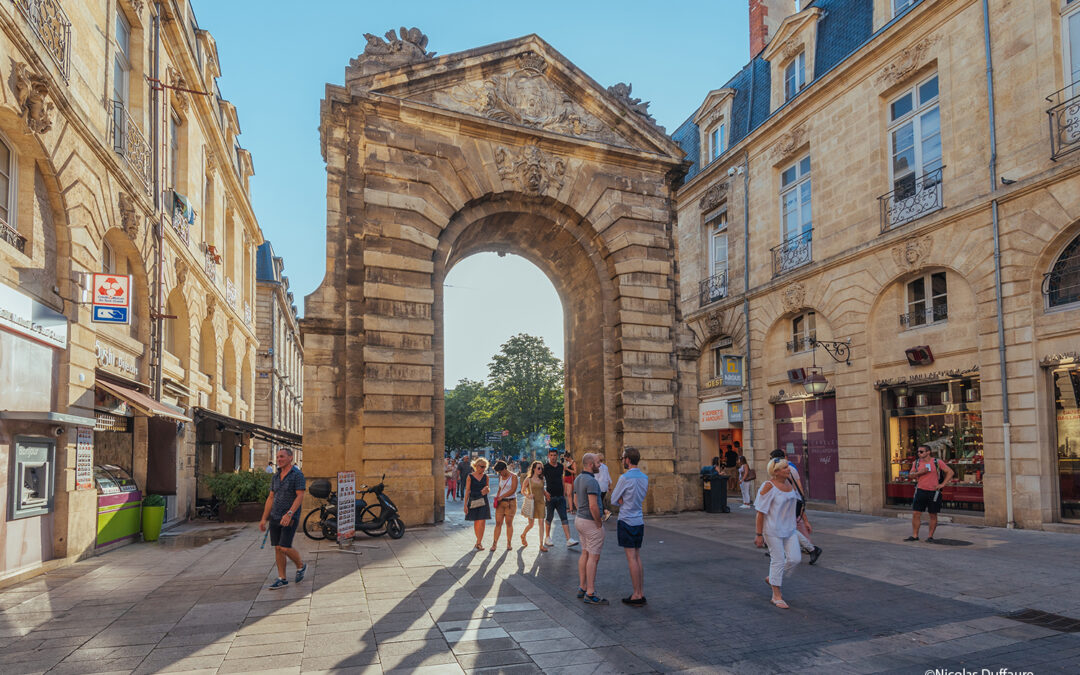Bordeaux Unesco : The “Porte Dijeaux”
by Mathias Maret
The Porte Dijeaux is a monument with a truly incredible history, alternating between destruction and reconstruction over time. The first building was built at the end of the Roman Empire in the 4th century, it was simply an opening in the western side of the wall and according to Camille Jullian, the gate of Jupiter or “porta Jovia”.
However, towards the beginning of the 14th century during the medieval period, it was destroyed to make way for a new gate, which was once part of the fortifications of Bordeaux, protecting it from possible external attacks. The current gate which sits between Place Gambetta and Rue Saint Catherine, was built in the 18th century, in the context of a policy of beautification of the city organized by the intendant of Guyenne, Louis-Urbain-Aubert de Tourny .
From 1748, he called on a close collaborator, his usual architect, André Portier, who erected the current monument according to his plans. It is quickly embellished by the decorations of the sculptor Claude-Clair Francin, who works on Frontenac stone, a hard and intense element usually used for the foundations of a building.
In 1753, the Dijeaux gate was finalized, revealing several decorative elements: the coat of arms of Bordeaux, a mask representing the head of Neptune to chase away evil spirits, it was said, itself surrounded by fantastic animals, an element which does honor to the city of Bordeaux as highlighted by the Bordeaux writer Michel Suffran, describing an “entire city of masks” and a “chimerical theater”.



